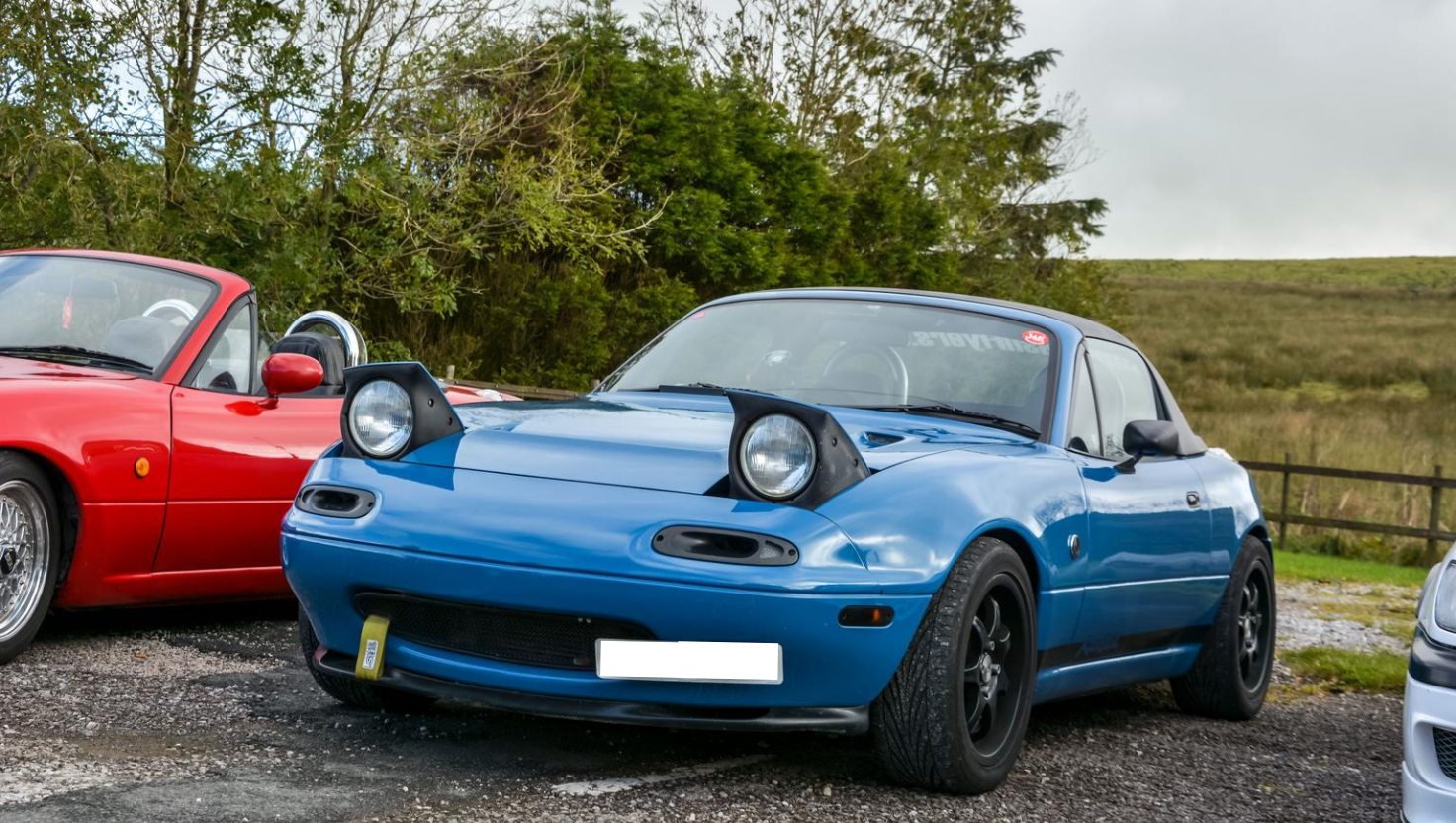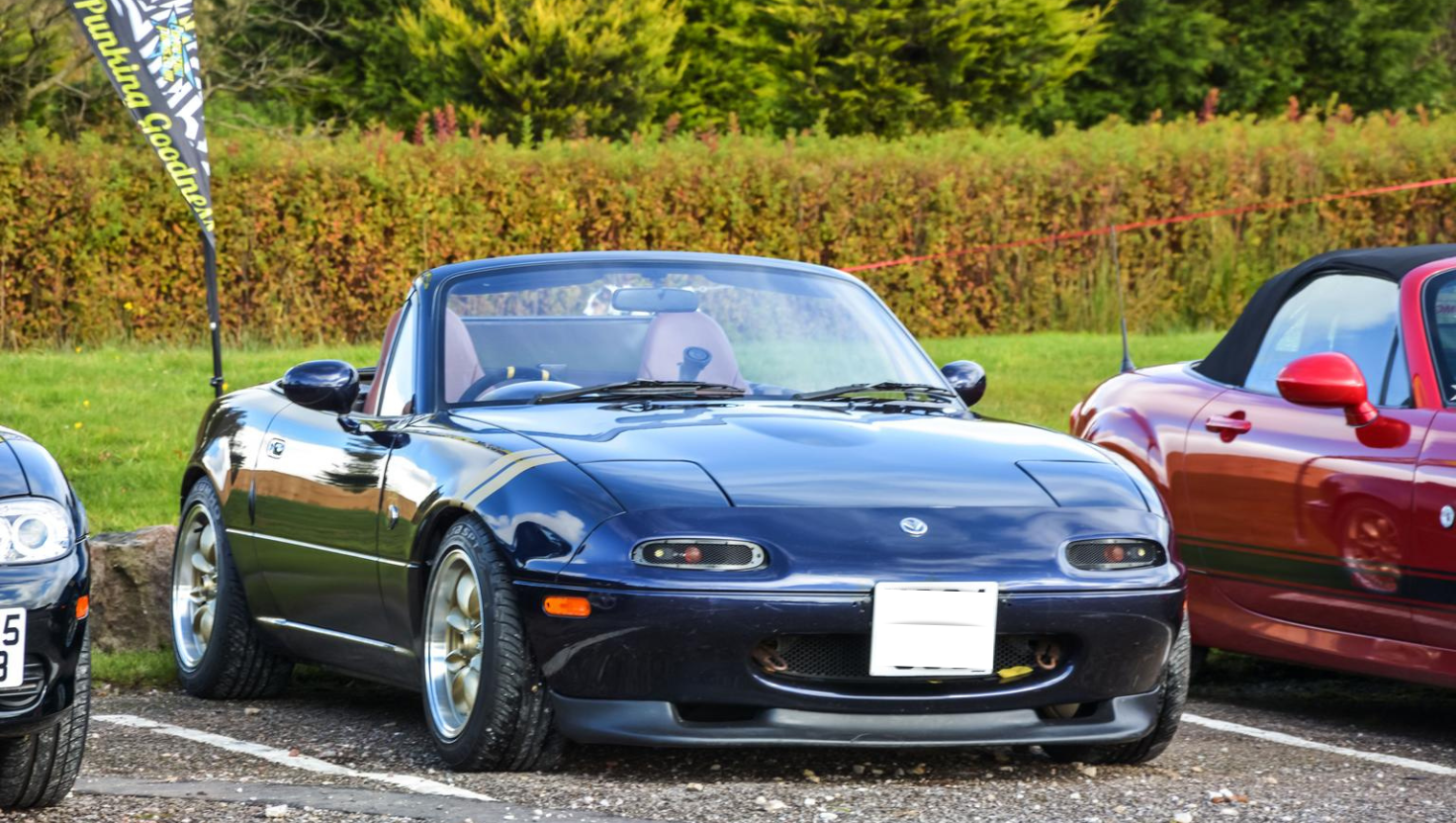
Why the Mazda MX-5 Reigns as the Best British Sports Car of All Time
The Mazda MX-5 might have Japanese origins, but its soul is undeniably British. Since its 1989 debut, this lightweight roadster has accomplished what countless British manufacturers attempted but ultimately abandoned - creating a reliable, affordable sports car that delivers pure driving pleasure without compromise.
The British Sports Car Formula, Perfected
The MX-5's genesis began in 1983 when Mazda deliberated on creating a lightweight sports car. Their inspiration? The golden era of British roadsters - the Lotus Elan, Triumph Spitfire and MGB. These vehicles pioneered the formula: lightweight construction, rear-wheel drive, perfect weight distribution and an open-top experience.
Mazda recognised not just the brilliance of this formula but also its vulnerabilities. British sports cars of the 1960s and 1970s earned notoriety for electrical gremlins, oil leaks and frustrating reliability issues. The MX-5 project aimed to capture the essence of these iconic vehicles while engineering away their shortcomings.
Technical Excellence Without Compromise
The MX-5's technical prowess reveals itself through deliberate engineering decisions.
- 50:50 Weight Distribution: Unlike many front-heavy competitors, the MX-5 places equal weight on all four corners, delivering neutral handling characteristics previously achieved by significantly more expensive vehicles.
- Front-Midship Engine Layout: The engine sits behind the front axle, contributing to the car's exceptional balance without sacrificing the practicality of front-engine accessibility.
- Jinba Ittai Philosophy: The Japanese concept of 'rider and horse as one' guided development, creating a vehicle that responds to driver inputs with almost telepathic precision.
- Lightweight Construction: The first generation weighed a mere 940kg, adhering to Colin Chapman's principle of 'adding lightness' more faithfully than many contemporary British sports cars.
- Double-Wishbone Suspension: In early models, all four corners featured this racing-derived setup, which provided exceptional control while maintaining compliance over rough surfaces.
Preservation of Heritage When the British Could Not
By the late 1980s, the affordable British sports car was effectively extinct. Economic pressures, changing market demands and reliability concerns forced manufacturers to abandon the segment. The MX-5 arrived precisely when enthusiasts faced the prospect of never experiencing a new, affordable roadster again.
What makes the MX-5 quintessentially British in spirit is its technical homage and its unwavering commitment to driving purity. Each subsequent generation has maintained remarkably close adherence to the original philosophy:
- The NA (1989-1997) introduced the formula with pop-up headlights and a minimalist design
- The NB (1998-2005) refined the package while maintaining mechanical simplicity
- The NC (2005-2015) added contemporary features without compromising the driving experience
- The ND (2015-present) returned to its roots with significant weight reduction
Throughout these evolutions, the MX-5 remained more faithful to British sports car principles than any British manufacturer during the same period.
The Recognition of Excellence
The British motoring press embraced the MX-5 from the beginning. In 1990, it won Sports Car of the Year from Middlesborough's North Eastern Gazette. This recognition from the heartland of British motoring enthusiasm speaks volumes about how thoroughly the MX-5 captured the essence of what British drivers value.
By 2005, the MX-5 had earned recognition from Guinness World Records as the best-selling two-seater sports car in history, with over 531,890 units sold. This commercial success validated what enthusiasts already knew - Mazda had not just preserved the British roadster formula; they had perfected it.

The Enthusiast's Perspective
Owners of classic British sports cars often develop a complicated relationship with their vehicles. The joy of perfect B-road driving moments is frequently tempered by weekends spent diagnosing electrical faults or addressing oil leaks. The MX-5 delivered the former without demanding the latter.
For those who cherish driving purity above all else, the MX-5 represents a triumph of engineering discipline. When other manufacturers added complexity, weight and electronic aids that diluted driver engagement, Mazda held firm to principles established by British sports car pioneers like Colin Chapman and Donald Healey.
The Ultimate Evolution
What makes the MX-5 the 'best British sports car' is precisely that it is the ultimate evolution of British sports car philosophy. It took Japanese engineering precision to fully realise the potential British manufacturers had glimpsed but never completely fulfilled.
When British marques abandoned lightweight sports cars in favour of premium positioning or simply ceased trading, Mazda assumed responsibility. They preserved driving experiences that would otherwise have been consigned to classic car meets and vintage racing events.
The MX-5 isn't merely inspired by British sports cars - it is their spiritual successor and the fulfilment of their promise. The Mazda MX-5 isn't just beloved in Britain - it has become the sports car of choice for driving enthusiasts around the globe. Known affectionately as the Miata in North America, the Roadster in Japan, and even the Eunos Roadster during its initial launch, this iconic vehicle transcends cultural boundaries. Its global popularity is a testament to Mazda's universal appeal, blending British sports car charm with Japanese reliability and precision. No matter the name it goes by, the MX-5 continues to be revered internationally as the definitive affordable sports car, embodying the joy and purity of driving.
Finding Your Perfect MX-5
For enthusiasts seeking to experience this remarkable blend of British character and Japanese reliability, several considerations should guide your search:
- First Generation (NA, 1989-1997): The purest expression of the concept, featuring pop-up headlights and the most mechanical feel. Look for well-preserved examples with minimal modifications and a comprehensive service history.
- Second Generation (NB, 1998-2005): Slightly more refined with improved structural rigidity. The 1.8-litre models with Torsen limited-slip differentials offer the most engaging driving experience.
- Third Generation (NC, 2005-2015): More modern amenities while maintaining the driving essence. The later 2.0-litre models provide additional torque without compromising the car's balance.
- Fourth Generation (ND, 2015-present): A return to the lightweight principles of the original, with modern safety features and efficiency. The 2.0-litre models with the limited-slip differential provide the most engaging drive.
Experience the Legend for Yourself
The debate about the 'best' British sports car typically involves increasingly rare vehicles that are expensive to maintain and compromise in daily use. The MX-5 offers an alternative - the authentic British sports car experience without the traditional drawbacks.
At Rimmer Bros, we understand the technical needs of discerning enthusiasts. Whether you're maintaining your classic MX-5 or preparing it for track days, our specialist knowledge and comprehensive parts catalogue ensure your roadster delivers the driving experience it was engineered to provide.
Visit our dedicated Mazda MX-5 section to discover our OEM and performance components range. These components maintain the purity of what has become the ultimate expression of British sports car philosophy - even if it took Japanese engineers to perfect it.